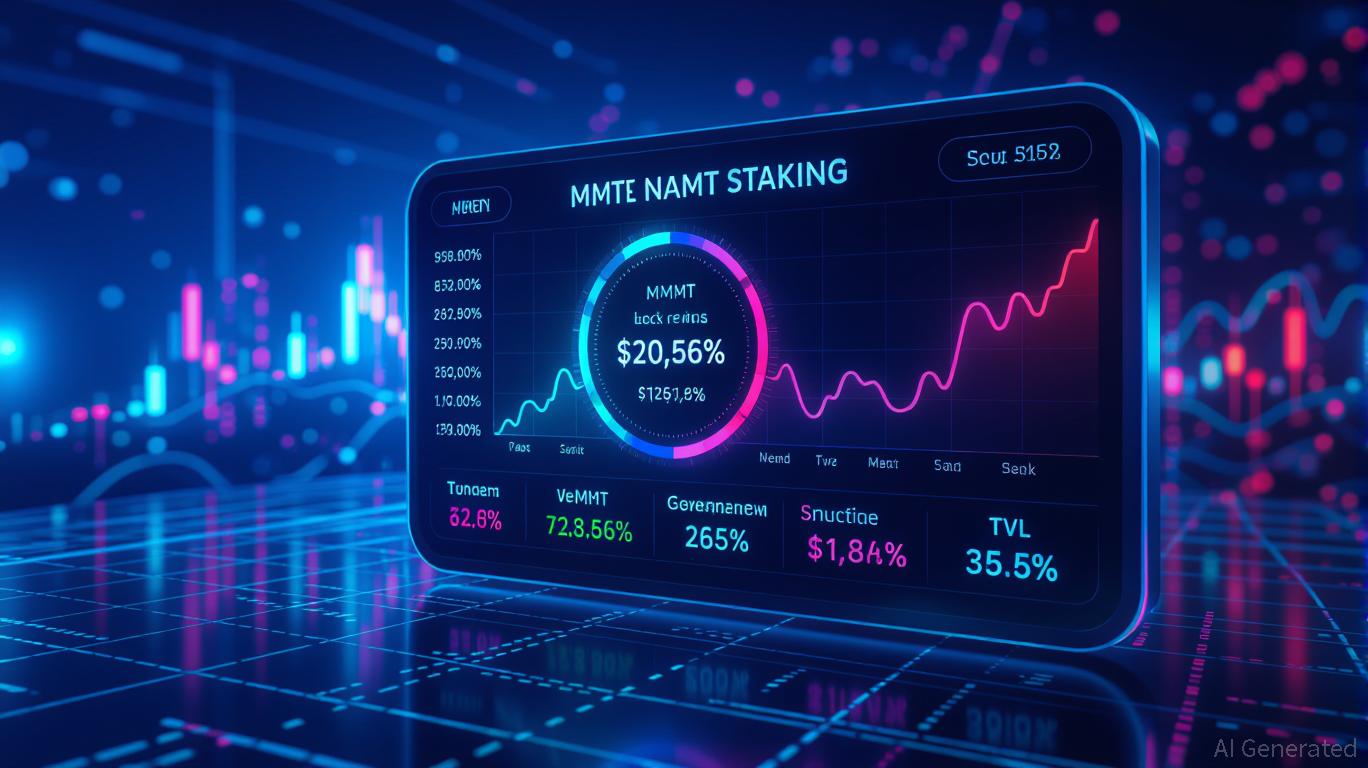Ethereum News Update: PEPE Drops to Lowest Point in 7 Months—Will Support Trigger a Recovery or Lead to Further Decline?
- Meme coin PEPE fell 10% to a 7-month low of $0.0055871 amid broader crypto market weakness and ETF outflows. - Technical indicators suggest potential rebound from key support levels, but structural issues like oversupply and lack of utility persist. - Emerging meme coin LILPEPE attracts $27.4M in presale, offering high-beta alternative to PEPE with Layer-2 infrastructure and viral marketing. - Analysts remain divided on PEPE's recovery potential, with predictions ranging from 114% gains by 2026 to warnin
The
The recent selloff is part of a wider risk-averse trend in the crypto space, where
Despite the recent losses, some technical signals indicate a possible recovery. The key support level at $0.0055871 has often sparked bullish reversals in the past, and a rebound from this price could signal a short-term rally, according to Cryptonews. A well-known "PEPE Whale" on X pointed out signs of a reversal, encouraging bulls to watch the next resistance area for confirmation. Crypto analyst Chandler Charts also noted that PEPE’s oversold status—its 14-day RSI at 29.97—could lead to a recovery of over 100%, similar to previous rebounds from these levels.
However, optimism is dampened by broader market headwinds. The crypto market is currently in a "fear" phase, with PEPE trading below both its 50-day and 200-day moving averages, as mentioned in a
Experts remain split on PEPE’s short-term outlook. Some forecast a 114% increase by 2026 based on long-term technical analysis, as reported by Tribune India, while others warn that factors like PEPE’s large supply and limited utility may prevent a lasting recovery. The coin’s future will likely depend on broader market trends, with any rebound tied to a general crypto market recovery, according to Cryptonews.
As the situation unfolds, investors are monitoring both PEPE’s support levels and the progress of newer meme coins. For now, caution prevails, with risk-averse sentiment dominating a market still unsettled by recent volatility.
---
Disclaimer: The content of this article solely reflects the author's opinion and does not represent the platform in any capacity. This article is not intended to serve as a reference for making investment decisions.
You may also like
Bitcoin soars past $105K after Trump’s $2,000 tariff payout promise ignites crypto rally

MMT Token Value Soars: Governance Enhancements and DeFi Drivers in 2025
- MMT token surged in late 2025 due to ve(3,3) governance upgrades and DeFi adoption growth. - Binance's 0.75% genesis airdrop boosted community engagement and institutional validation. - TVL exceeded $600M with 2.1M users, driven by cross-chain integrations and fee-sharing incentives. - Inflationary token unlock risks (79.59% supply over 48 months) balance against Q1 2026 perpetual DEX launch. - Momentum's RWA platform and Sui-Ethereum bridging position it as a DeFi governance hub with sticky capital pote

MMT Token TGE and Its Influence on the Market: Evaluating Practical Use and Adoption Prospects Amid Market Volatility
- MMT token's November 2025 TGE triggered a 1330% price surge and attracted institutional investment. - Listings on Binance/Upbit and $10M funding from Coinbase Ventures amplified liquidity and market credibility. - Speculative trading dominates growth, with TVL at $265M but limited real-world utility beyond DeFi staking. - Phishing risks and reliance on exchange incentives highlight adoption challenges despite institutional backing. - Future viability depends on ve(3,3) DEX launch and RWA integrations to

Decentralized Finance's New Era: Examining TWT's Growth Following Its Addition to Exchanges
- Trust Wallet Token (TWT) shifted from exchange integrations to a loyalty-driven ecosystem via Trust Premium, linking token utility to user engagement tiers (Bronze-Gold). - TWT's price stabilized post-launch, with analysts projecting a $5.13 peak in 2025, driven by cross-chain utility and tiered incentives for long-term holdings. - The model redefines DeFi tokens as functional ecosystem components, prioritizing user retention over speculative trading, aligning with trends like tokenized real-world assets
